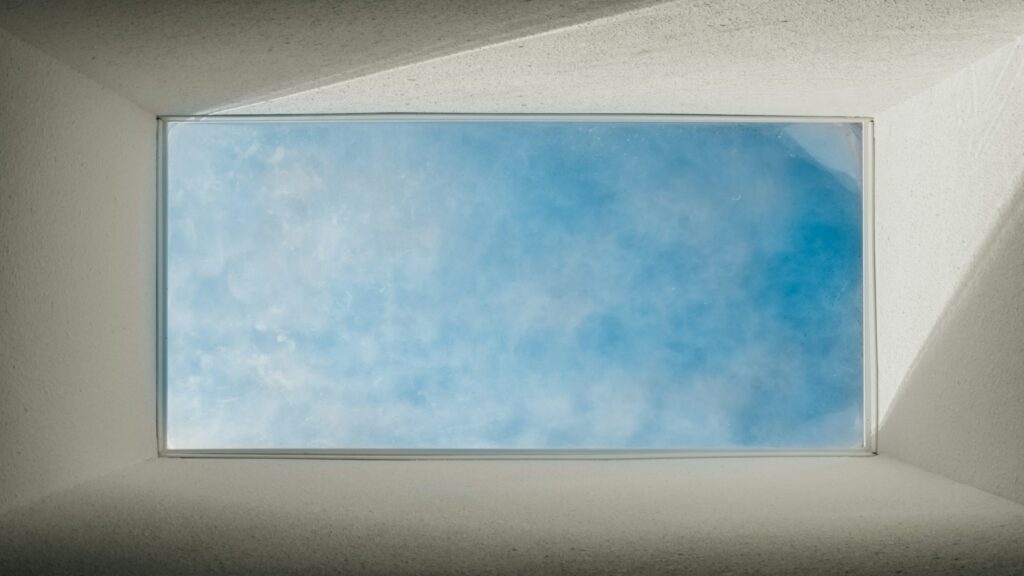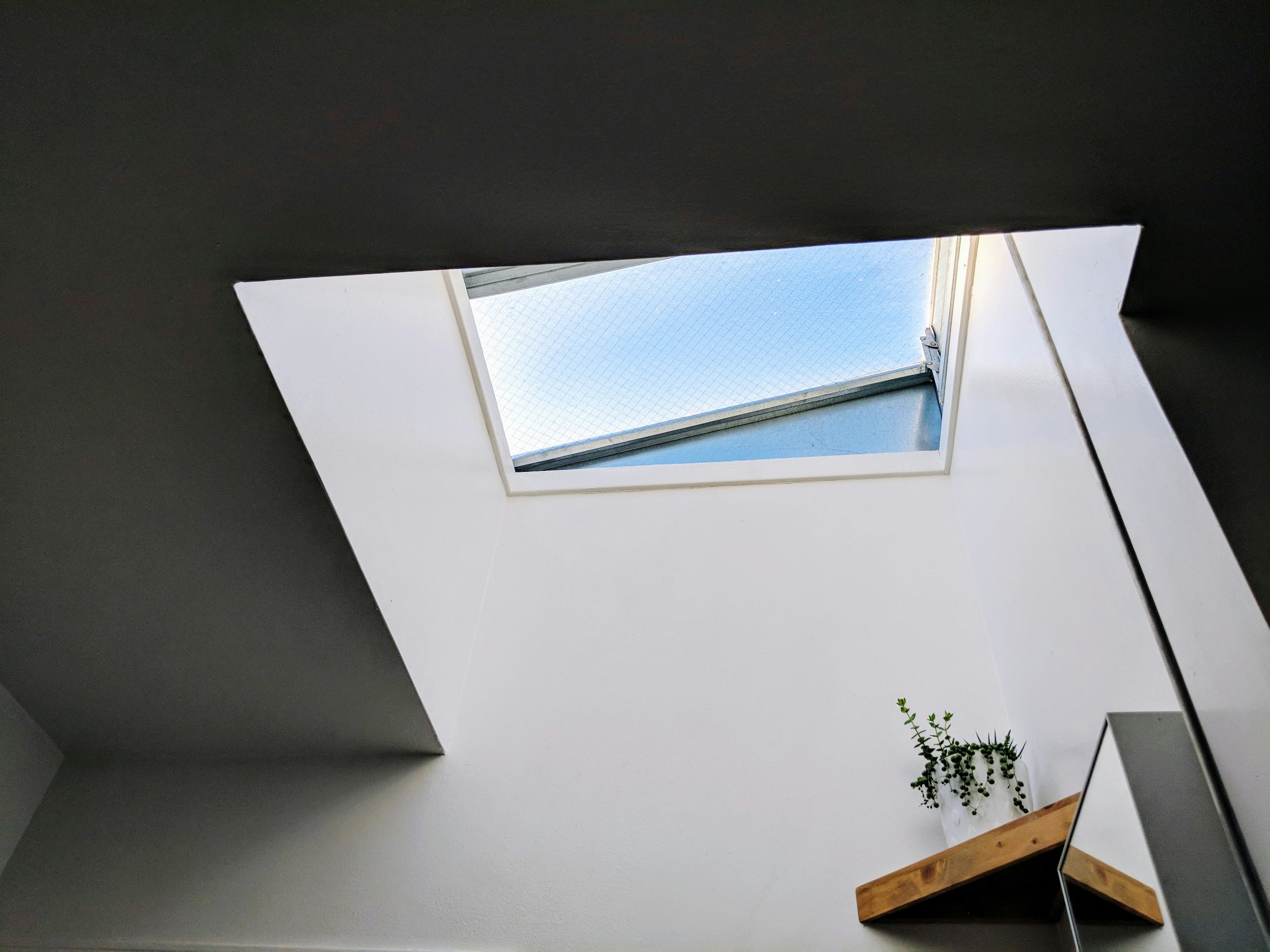In architecture and interior design, skylights are often hailed as the jewel in the crown, transforming spaces with their ability to flood interiors with natural light. However, while they offer aesthetic appeal and reduce the need for artificial lighting, skylights have unique challenges. Managing heat, glare, and harmful UV rays is paramount, making skylight tinting a topic worthy of in-depth exploration.

A Tale of Two Skylights
Imagine a sun-drenched living room, its ambience and furniture slowly succumbing to the sun’s harsh rays. Now, picture a similar room, bathed in soft, natural light, its comfort and aesthetics preserved by the subtle intervention of skylight tinting. This contrast encapsulates the transformation offered by skylight tinting, marrying the benefits of natural light with protection against its detrimental effects.
Special Considerations for Skylight Tinting
The process of skylight tinting is nuanced, requiring careful consideration of various factors to ensure the optimal balance between natural light benefits and protection against its adverse effects. Here’s an in-depth look into the special considerations for skylight tinting:
Material Compatibility
Not all skylights are made from the same materials, and this diversity demands a tailored approach to tinting. The primary materials used in skylights include glass and various plastics, such as acrylics and polycarbonates. Each material has distinct characteristics affecting how it interacts with tinting films.
For example, glass skylights may accommodate a wide range of tinting solutions, while plastic skylights might require specific types of films to prevent damage or discolouration over time. Understanding the material of your skylight is essential to selecting a compatible tinting solution that will offer longevity and effectiveness.
Weather Reinforcement
Skylight films can provide significant weather reinforcement beyond the sun’s glare and UV protection. This feature is essential in areas prone to extreme weather conditions, such as high winds, hail, or heavy rain. Advanced tinting films can add an extra layer of strength to skylights, helping to prevent breakage or leakage during storms.
Moreover, some films offer safety and security benefits by holding shattered glass in place, minimizing the risk of injury from flying glass pieces during severe weather events.
Technological Innovations
Skylight tinting has seen remarkable technological advancements, notably the development of self-tinting skylights. These innovative skylights use materials that automatically adjust their tint based on the sunlight’s intensity.
This dynamic adaptation means that the skylights can minimize glare and heat when the sun is brightest while allowing maximum light transmission during overcast conditions or at times when sunlight is less intense. This automatic adjustment enhances occupant comfort and improves energy efficiency by reducing the need for artificial lighting and air conditioning.
Selecting the Right Tinting Solution
When choosing a tinting solution for your skylight, consider these key factors:
Performance Characteristics
Heat Rejection Capabilities
- Advanced ceramic films can reduce heat transfer by up to 78% through skylights
- Look for films with high infrared rejection properties for maximum temperature control
- Consider the specific climate and sun exposure of your location
UV Protection Levels
- Premium window films can block up to 99% of harmful UV radiation
- This protection helps prevent interior damage and fading
- Essential for preserving furniture, flooring, and artwork beneath skylights
Film Technologies
Ceramic-Based Films
- Offer superior heat rejection while maintaining clarity
- Provide excellent durability and longevity
- Ideal for harsh weather conditions and intense sun exposure
Multi-Layer Optical Films
- Feature advanced technology for maximum heat rejection
- Maintain a nearly colorless appearance
- Provide superior clarity and visibility
Installation Considerations
Location Factors
- The external installation often provides better solar performance
- Must be applied on flat surfaces only
- Cannot be used on domed, textured, or patterned skylights
Durability Requirements
- External films typically last 2-15 years, depending on brand and manufacturer
- Consider warranty coverage and expected lifespan
- Factor in local weather conditions and exposure levels
Light Management
Visible Light Transmission
Create a balance between:
- Natural light penetration
- Glare reduction
- Aesthetic preferences
- Energy efficiency goals
Cost Considerations
Investment Factors
- Quality of film material
- Installation complexity
- Access costs for elevated skylights
- Long-term energy savings potential
Professional Installation
Importance of Expert Application
- Proper installation is crucial for maximum effectiveness
- Ensures warranty validity
- It prevents common issues like bubbling or peeling
Conclusion
Skylight tinting offers a practical solution to enhance the comfort, safety, and efficiency of spaces illuminated by natural light. By considering material compatibility, weather reinforcement, and embracing technological innovations like self-tinting skylights, property owners can make informed decisions that maximize the benefits of their skylights while mitigating potential downsides.
Always consult a professional to assess your specific needs and ensure that the chosen tinting solution perfectly aligns with your skylight’s material, climate, and personal preferences.
